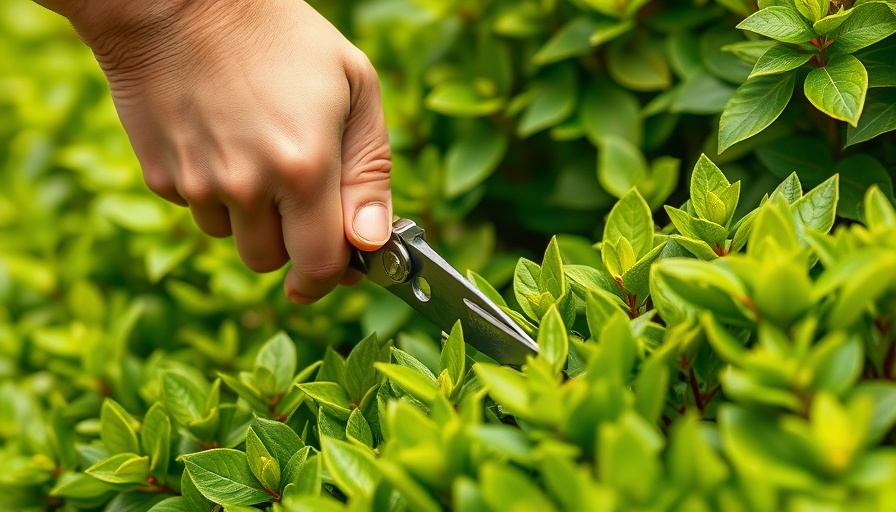
Transform Your Garden: The Essential Guide to Trimming Hedges
When it comes to creating a beautiful garden, hedges can serve as both functional and stunning elements, providing privacy and structure. But to thrive, hedges need the right care and trimming techniques. If you’ve ever looked at a raggedy hedge and wondered how to make your garden bloom with life, you’re in the right place. With this comprehensive guide, you can learn how to trim hedges effectively and maintain their lovely appearance year-round.
Understanding the Right Timing for Hedge Trimming
One of the main factors in achieving a flourishing hedge is knowing when to trim. In general, hedges should be pruned in early spring or late winter, before new growth begins. This approach encourages healthy growth and a lush appearance. However, it's vital to consider the specific species of your hedge, as some may thrive better with different pruning schedules. Aim for a mix of seasonal care! It’s also crucial to regularly assess your hedge throughout the growing season to ensure you aren’t letting any wild branches take over.
Choosing the Right Hedges for Your Garden
Your hedge choices play a significant role in how easy or challenging pruning may be in the future. Slow-growing varieties such as boxwood and yew are excellent choices for easy maintenance, while others like laurel can grow rapidly, requiring more diligent trimming. Investing in the right plants will pay off, transforming your garden into a sleek green wall.
The Trimming Techniques You Need
Trimming hedges requires finesse, so using the right tools is essential. Hand tools such as pruners and shears are great for small and young hedges, while electric trimmers can help with larger or mature hedges. Ensure your tools are clean and sharp before starting—this fosters smooth cuts and minimizes damage to your plants.
Integrating Hedges Into Your Landscape Design
When choosing to trim and shape your hedges, keep in mind how they interact with the rest of your garden. Hedges can frame flower beds, create pathways, or act as natural fences. By maintaining a clean edge and consistent shape, you will ensure that your hedges enhance your overall landscape design rather than detract from it.
A Common Misconception: Pruning vs. Trimming
Many gardeners confuse the terms pruning and trimming. While both are crucial for plant health, pruning usually involves removing dead or diseased wood, whereas trimming keeps plants in shape. Understanding the difference helps you maintain a healthy hedge structure and encourages new growth, paving the way for a vibrant garden.
Benefits of Hedge Pruning Beyond Aesthetics
The advantages of keeping your hedges well-trimmed go beyond just looking good! Hedging plants can boost biodiversity in your garden by providing habitats for various wildlife. Additionally, healthy hedges can help with controlling pests and improving air circulation throughout your garden. By actively pruning and caring for your hedges, you contribute to a thriving environment for your entire garden ecosystem.
Conclusion: Embrace Your Garden’s Potential
As you embark on your journey to trim and shape your hedges, remember that patience and regular care are key to making the most of your gardening space. Whether you aim for a structured look or a more whimsical shape, your efforts in trimming hedges will enhance both your home and the surrounding community by creating an inviting outdoor space. Explore the right resources, plan your trimming for success, and watch as your garden flourishes with beauty and life!
Transform your backyard into a beautiful oasis and keep your hedges looking spectacular year-round!
 Add Row
Add Row  Add
Add 




Write A Comment